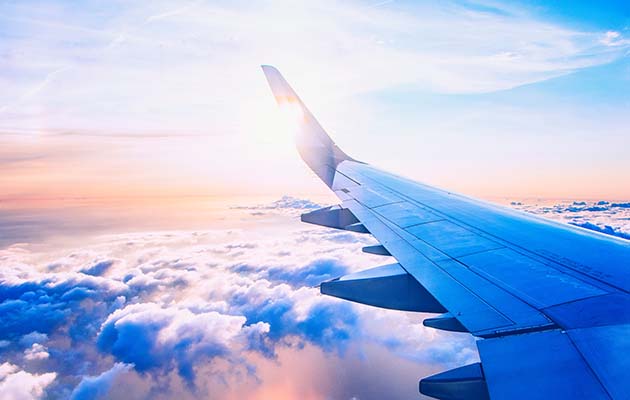-
Articles
Buckle up: Turbulence ahead in the commercial aviation sector
During the week leading up to the 25th anniversary of the signing of the Montreal Convention 1999 (“Convention”), an unprecedented number of passengers were injured due to severe turbulence on two separate commercial flights. More than 100 passengers were injured (20 seriously) and one person was killed on a Singapore Airlines flight from London to Singapore, and 12 passengers were injured on a Qatar Airways flight from Doha to Dublin.
Compensatory regime
The Convention establishes a modern compensatory regime for passengers who suffer death or injury as a result of accidents during air travel; this regime replaces the arbitrary limits that existed under the Warsaw Convention with a two-tier strict liability structure. As a result of the recent incidents, the Convention’s liability caps have been thrust into the spotlight.
Flights covered by the Convention
The Convention applies to international flights for which the place of departure and destination (whether or not there are breaks in the carriage), are located in State Parties’ territories. Singapore, the UK, Qatar, and Ireland are signatories to the Convention, so passengers whose flights commenced and ended in those countries will be subject to the Convention; however, passengers whose flights commenced or ended in a country that was not a party to the Convention are subject to different treaties, or, if no applicable treaties exist, to no treaty at all. For example, if a passenger booked a ticket from London to Yangon, transiting through Singapore, the Convention will not apply, because Myanmar is not a party; in that case, the passenger’s claims will be governed by the Warsaw Convention.
Liability Cap
Article 21 of the Convention establishes a liability cap for death or bodily injury, which is reviewed every five years. Since 2019, the liability cap has been 128,821 Special Drawing Rights*, currently valued at approximately US $170,700 (“Liability Cap”); the Liability Cap is likely be reviewed again later this year.
*Special Drawing Rights are international reserve assets created by the International Monetary Fund and defined by a basket of currencies, currently comprised of the U.S. Dollar, Euro, Chinese Yuan, Japanese Yen, and British Pound.
Contributory negligence
Airlines are exonerated from liability for damages claims if they can prove that the damages were caused by the passenger’s negligence, wrongful act(s), or omission(s), and are not liable for claims in excess of the Liability Cap if the airline can prove that the damages were not caused by the relevant airline’s own negligence, acts, or omissions (or those of the airline’s agents), and were due solely to the negligence, wrongful acts, or omissions of third parties. Claims in excess of the Liability Cap may be made unless the airline can show that it was not guilty of negligence in causing death or injury.
Claims above the Convention’s Liability Cap
The Convention permits airlines to challenge claims for damages, up to the Liability Cap, by alleging passenger negligence (e.g., showing that passengers ignored warnings or instructions to keep seat belts fastened securely when seated). However, if injured passengers who did not contribute to their own injuries make claims for damages in excess of the Liability Cap, airlines are likely to try to limit their liability for the excess amounts, either by demonstrating that the injuries arose from sudden turbulence in circumstances where the airline had insufficient time to warn passengers, or, in the case of storm-related turbulence, that the airline took all necessary precautions to prevent injuries to passengers before the turbulence occurred, for example, illuminating seatbelt signs, announcing that passengers must return to their seats, and securing food and beverage trolleys to prevent projectiles and hazards in the aisles.
The location of the court Is important
The amount of compensation awarded will vary, even with regard to similar injuries, depending on where the action against the airline is filed. The injured claimant is permitted to choose the venue, but the Convention requires filings to be made in the territory of a State Party, which must be either (a) the country in which the claimant resides, (b) the domicile of the carrier or the carrier’s principal place of business, (c) the country where the ticket was purchased, (d) a country to or from which the airline operates passenger flights, or (e) the courts in the destination country.
The Convention permits an airline’s conditions of carriage to require disputes to be settled by arbitration, but in the absence of an arbitration clause, injured passengers will be able to choose to commence proceedings in the courts of several countries, and can be expected to favour jurisdictions which have a track record of awarding high damages for personal injuries and a lower threshold for establishing negligence by airlines.
Effect on mandatory insurance
State Parties to the Convention must require airlines to maintain adequate levels of liability insurance, and may require airlines to provide evidence that the liability insurance carried will cover the airline’s potential liability under the Convection. While it remains to be seen whether turbulence-related injuries will increase, insurers are likely to have keen interest in the amount of damages paid to passengers and their families for injuries suffered on these recent flights, when establishing premiums for future turbulence coverage.
Passengers may wonder why airlines go to great lengths to demonstrate how to fasten seatbelts, despite most people being familiar with seatbelt use. However, if airlines wish to challenge claims below the Liability Cap due to passengers’ failure to fasten their seatbelts, the airlines also must be able to prove the passengers understood how to use the seatbelts properly. That said, airlines still face challenges in determining whether passengers failed to fasten their seatbelts before turbulence (or other incidents) began. Unlike automobiles, currently most commercial flights lack sensors that can identify which passengers have not fastened their seatbelts; however, this may change if airlines foresee increasing risks of injuries resulting from turbulence.








Chris has been based in Thailand since 2001 and has more than two decades of experience working alongside Thai lawyers on cross-border M&A and regulatory matters, providing international-level solutions to companies entering the Thai market. His clients include global companies investing or acquiring assets in Thailand and Thai companies engaging in cross-border transactions. He advises international and Thai companies on the development, sale, and acquisition of renewable energy projects in Thailand and across Asia.
His M&A practice has included private M&A, advising institutional and activist investors on SEC/SET reporting requirements and acquisition thresholds, and strategic shareholders on synergistic de-layering of listed group structures. His sector expertise for M&A includes manufacturing, TMT, logistics, renewable energy projects, and the service sector for both buy-side and sell-side, share and asset sale transaction structures. He has advised overseas law firms on the acquisition of Thai law firms.
With a focus on renewables (including transition), Chris’ energy practice has more than 1 GW’s experience in onshore wind, solar (PV, thermal, ground mount utility scale, and C&I rooftop), and waste-to-energy projects. His experience has a broad reach, from due diligence of early-stage projects, advising on EPC/O&M, corporate PPAs, equity funding, and project finance, to pre- and post-commissioning exits and acquisitions.